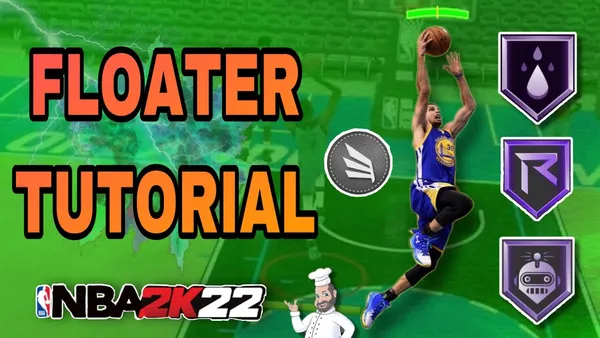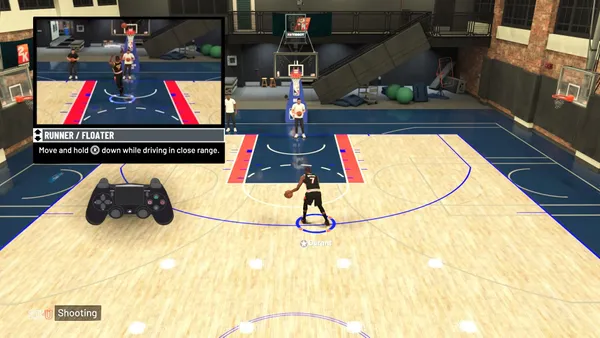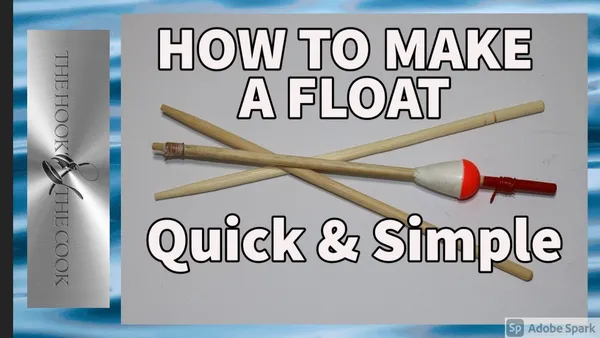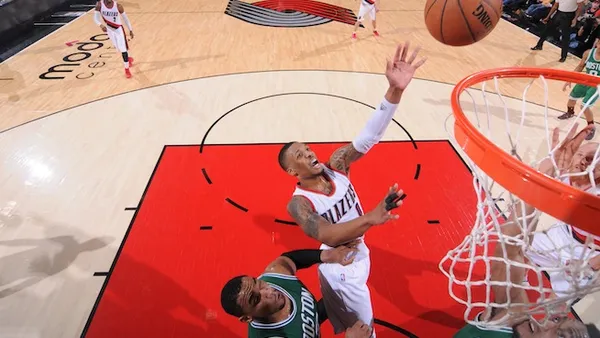Table of Contents
Have you ever wondered How to do a floater? At Kizworld, we're here to guide you through the process of creating this impressive swimming technique. Whether you're a beginner or looking to improve your skills, our comprehensive guide will provide you with the knowledge and techniques you need to master the art of floating effortlessly on water.
How to Do a Floater: A Step-by-Step Guide to Master This Basketball Move
I. How to Do a Floater: A Step-by-Step Guide
How to Do a Floater: A Step-by-Step Guide
For a crisp, clean floater that grabs the audience's attention, start by performing a powerful vertical jump, aiming your body towards the basket. As you reach your peak, remain poised, and hold your body steady. Use your core strength to control your body and execute a precise landing. Remember, balance and timing are key components for an effective floater.
Essential Tips for Executing a Floater Shot
- Develop strong core muscles, which play a crucial role in controlling the body during the floater.
- Practice maintaining balance, especially while in the air and when landing, for smoother execution of the shot.
- Focus on developing hand-eye coordination to ensure accuracy when releasing the ball.
To further enhance your floater technique, consider these tips. Firstly, by slightly pushing the ball forward rather than upward, you can ensure a softer touch and improved control. Secondly, aiming for the lower part of the backboard, just above the rim, can increase your chances of making a successful shot. Finally, practicing in various scenarios, such as during scrimmages or pickup games, can help you adapt to different situations and improve your overall floater skills. With dedication and practice, you can master this fundamental basketball move.
Additional Drills and Exercises to Improve Your Floater
- Vertical Jump Drills These drills, like box jumps and single-leg hops, will elevate your vertical leap.
- Jump Rope Exercises Jump rope workouts help with coordination, balance and agility, all essential for the floater shot.
- Basketball Drills for Beginners Practice fundamental ball handling drills to perfect your floater shot.
Drill | Benefits |
|---|---|
Form Shooting Drill | Master the proper form and technique for the floater shot. |
One-Legged Floater Drill | Develop balance and coordination while executing the floater. |
Floater Shot in Traffic Drill | Practice making floaters amidst defenders, simulating game-like situations. |
Conclusion and Additional Resource
By incorporating these techniques, drills, and exercises into your training routine, you can significantly improve your floater shot. Remember to prioritize balance, timing, and hand-eye coordination for a more effective floater. For further insights into perfecting your floater, check out our comprehensive guide on How to Master the Floater Shot in Basketball.
II. Mastering the Floater: Tips and Techniques
Mastering the Floater: Tips and Techniques
Boosting Antioxidant Intake
Embark on a dietary voyage rich in antioxidants to help combat free radical damage and protect against cellular deterioration. Consume an array of colorful fruits like berries, oranges, and mangoes, as well as leafy greens like spinach, kale, and broccoli. These vibrant foods are brimming with phytochemicals and carotenoids, potent antioxidants that act as nature's bodyguards.
- Related Post: The Benefits of Gymnastics for Kids
- Related Post: How to Do a Handstand
Incorporating Eye Exercises
Engage in a regimen of eye exercises to enhance the strength and flexibility of your ocular muscles. Focus on a distant object, then a nearby object, and repeat several times. Try tracing the shape of a figure eight with your eyes, moving both clockwise and counterclockwise. Perform these exercises regularly to promote eye muscle coordination and alleviate strain.
Exercise | Benefit |
|---|---|
Blinking | Keeps eyes moist and prevents dryness |
Focusing | Strengthens eye muscles |
Tracking | Improves eye coordination |
Adequate Hydration: A Key to Preventing Floaters
保持身体水分充足是预防浮游物产生,增强整体眼部健康的重要一步。饮用大量的水,以促进身体的正常运作,同时帮助眼睛保持水分,降低浮游物出现的风险。减少含糖饮料和酒精的摄取,以确保身体完全吸收水分。多吃富含水分的水果和蔬菜,如黄瓜、西瓜和芹菜,也能达到相同的效果。
Did you know that the human body is made up of about 60% water? Staying hydrated is crucial for overall health, including eye health.
Adopting a Healthy Lifestyle
Prioritizing a healthy lifestyle encompasses a balanced diet, regular exercise, adequate sleep, and stress management. Maintaining a healthy weight reduces the risk of chronic diseases that can contribute to floaters, such as diabetes and high blood pressure. Exercise helps improve cardiovascular health and overall well-being, potentially reducing the likelihood of floater development. Prioritizing quality sleep allows the body and eyes to rest and repair. Additionally, managing stress levels through relaxation techniques like deep breathing and meditation may help prevent floater formation.
- Related Post: How to Do a Cartwheel
- Related Post: The Best Gymnastics Mats and Tumbling Tracks
III. Troubleshooting Common Floater Issues
Troubleshooting Common Floater Issues
While floaters are usually harmless, they can sometimes be a sign of a more serious underlying condition. If you're experiencing bothersome floaters, there are a few things you can do to try to alleviate them.
- Visit a Medical Professional: If you're concerned about your floaters, it's always a good idea to see a doctor or ophthalmologist for a comprehensive eye exam. They can determine if there's an underlying medical condition causing the floaters and recommend appropriate treatment.
- Adopt an Antioxidant Diet: Eating foods rich in antioxidants, such as fruits, vegetables, and leafy greens, may help reduce the appearance of floaters. Antioxidants help protect the cells in your eyes from damage caused by free radicals, which can contribute to the formation of floaters.
- Follow Eye Exercises: Certain eye exercises may help improve eye circulation and reduce the visibility of floaters. Some common exercises include focusing on a distant object for a few seconds and then shifting your focus to a nearby object, or rolling your eyes in a circular motion.
- Maintain Proper Hydration: Staying hydrated is essential for overall health, including eye health. Drinking plenty of water helps maintain the proper viscosity of the vitreous humor, reducing the likelihood of floaters forming.
Condition | Treatment |
Vitreous detachment | Vitrectomy |
Retinal tear | Laser surgery or vitrectomy |
Retinal detachment | Vitrectomy |
When is Floater Surgery Necessary?
In some cases, floater surgery may be necessary to address the underlying cause of the floaters or to prevent serious complications. Common surgical procedures for floaters include:
- Vitrectomy: This is a surgical procedure in which the vitreous humor is removed from the eye and replaced with a clear solution. Vitrectomy is typically performed to treat floaters caused by vitreous detachment, retinal tears, or retinal detachment.
Preventive Measures
While there's no surefire way to prevent floaters, there are some things you can do to reduce your risk of developing them:
- Protect Your Eyes from UV Rays: Wear sunglasses that block 100% of UV rays when outdoors.
- Maintain a Healthy Weight: Obesity is a risk factor for developing diabetes, which can increase the risk of floaters.
- Control Blood Sugar Levels: If you have diabetes, it's essential to keep your blood sugar levels under control to reduce the risk of diabetic retinopathy, a condition that can lead to floaters.
- Avoid Smoking: Smoking increases the risk of developing cataracts, which can also cause floaters.
Conclusion
Floaters are a common eye condition that can be bothersome but usually harmless. However, if you're experiencing a sudden increase in floaters or other vision changes, it's essential to see a doctor or ophthalmologist for a comprehensive eye exam. Early diagnosis and treatment can help prevent serious complications and maintain good vision.
If you're looking for more information on eye health, check out our related posts on The Benefits of Gymnastics for Kids, How to Do a Handstand, and The Best Gymnastics Equipment for Home Use.
IV. Variations of the Floater and Advanced Techniques
Variations of the Floater and Advanced Techniques
Floaters can manifest in various forms, each with its unique characteristics. Some common variations include:
- Weiss Ring: A small, white ring that appears around the floater.
- Myodesopsia: Floaters that resemble tiny, moving insects or cobwebs.
- Synchysis Scintillans: Glittering or sparkling floaters that shimmer in the field of vision.
In addition to these variations, there are advanced techniques that eye care professionals may employ to diagnose and manage floaters. These techniques include:
- Dilated Eye Exam: The pupils are dilated with eye drops to allow a comprehensive examination of the vitreous humor and retina.
- Optical Coherence Tomography (OCT): A non-invasive imaging technique that provides detailed cross-sectional images of the eye's structures, including the vitreous humor.
- Ultrasound Biomicroscopy: A high-resolution ultrasound technique that allows for the visualization of the vitreous humor and other eye structures.
Cause | Description |
Age-Related Changes: | As we age, the vitreous humor becomes more liquefied, leading to the formation of floaters. |
Posterior Vitreous Detachment (PVD): | The vitreous humor separates from the retina, causing a sudden increase in the number of floaters. |
Eye Inflammation: | Inflammation in the eye, such as uveitis, can cause the formation of floaters. |
Bleeding in the Eye: | Bleeding in the vitreous humor, known as vitreous hemorrhage, can lead to the appearance of floaters. |
Retinal Tears or Detachment: | Tears or detachment of the retina can cause floaters, along with other symptoms such as flashes of light and vision loss. |
It's important to note that while floaters are often harmless, they can sometimes be a sign of an underlying eye condition. If you experience a sudden increase in the number or size of floaters, or if you have other symptoms such as flashes of light, vision loss, or pain in the eye, it's essential to see an eye care professional promptly for a comprehensive evaluation.
For more information on floaters, their causes, and treatment options, visit our comprehensive guide: How to Do a Floater.